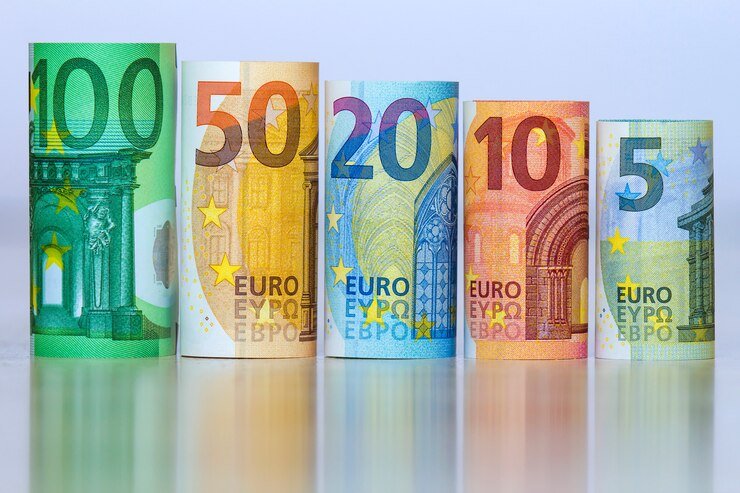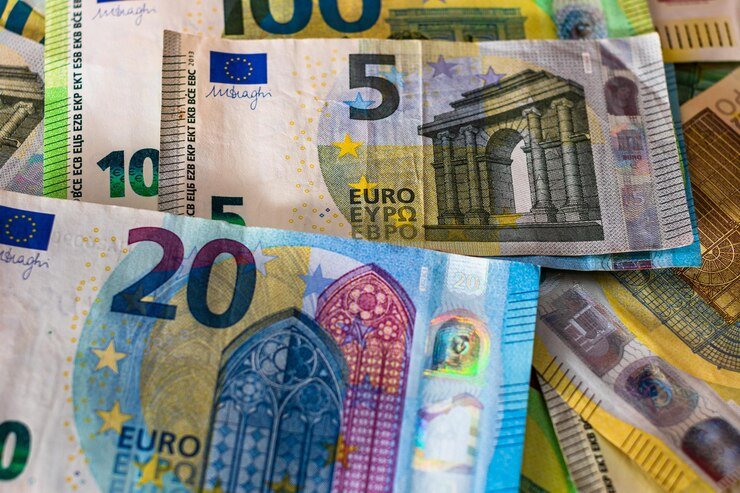EUR/USD Price Outlook: Testing Key Support Levels Amid Bullish Momentum
EUR/USD currency pair is now testing key support levels near 1.1320, with short-term bullish momentum boosted by the nine-day Exponential Moving Average (EMA) and the 14-day Relative Strength Index (RSI) staying above the 50 level. Unless recent retracements reverse the trend, the pair is still biased higher in an ascending channel pattern and could return to the April 21 high of 1.1573, which was its strongest level since November 2021. However, a breakdown below key support areas could reorient the trend into bearish grounds with additional risks for further losses extending towards the 50-day EMA at 1.1057 and a possible six-week low at 1.0360. KEY LOOKOUTS • EUR/USD is probing important support at the vicinity of the nine-day EMA at 1.1320. A penetration below this might change the bias to a more bearish bias, paving the way for more downside. • The 14-day RSI is still above the 50 level, supporting the ongoing bullish bias. Monitor any noteworthy changes in RSI behavior as an indication of possible trend reversals. • The duo can test the April 21 high of 1.1573, its highest since November 2021. Breaking above this level successfully may trigger more bullish action, with the next resistance around 1.1730. • If the 1.1320 support gives way, the EUR/USD may extend its fall, with significant downside targets at the 50-day EMA (1.1057) and the six-week low of 1.0360. Watch out for these levels to spot possible trend reversals. EUR/USD pair stands at a pivotal resistance, testing significant support around 1.1320, which is bolstered by the nine-day Exponential Moving Average (EMA). As long as the 14-day RSI stays above 50, indicating continued bullish pressure, a fall below this support would change the outlook to the downside, with possible targets at the 50-day EMA of 1.1057 and the six-week low of 1.0360. To the upside, the pair is targeting the April 21 high of 1.1573, a level not reached since November 2021, with additional resistance around 1.1730. Since the pair is oscillating within an upward channel, investors should monitor any changes in these major levels to determine the direction to expect next. EUR/USD is probing important support at 1.1320, and bullish momentum is shown by the RSI being above 50. If broken, this could see a decline to 1.1057, or the upside move to the April 21 high of 1.1573. Traders should be keenly aware of these levels for possible trend reversals. • EUR/USD is probing major support at the nine-day EMA at 1.1320, with a possible bearish reversal if this level is penetrated. • The 14-day RSI continues to stay above 50, reflecting positive momentum and supporting the short-term bullish bias. • The April 21 high at 1.1573 is a pivotal resistance level, possibly indicating further appreciation if penetrated. • EUR/USD is in an upward channel, indicating sustained bullishness unless there is a breakdown below support. • A breakdown below 1.1320 may find the pair challenging the 50-day EMA of 1.1057, a key level for medium-term trends. • A further drop may take the pair to the six-week low of 1.0360, which was last hit on February 28. • Traders need to watch closely key support and resistance levels to measure possible trend reversals or continuation. EUR/USD pair is now at a pivotal point as it consolidates around key levels, with a dominant bullish sentiment affecting its short-term direction. Such momentum is driven by optimistic market expectations, and even with recent retracements, the general trend appears to continue upward. With the duo moving through this stage, its ability to continue along the current path is being watched closely by traders and analysts, particularly as it hangs around key levels that may determine its next move. EUR/USD DAILY PRICE CHART CHART SOURCE: TradingView In the overall picture, the EUR/USD is set in a manner that indicates possible future prospects for additional increases, particularly with historical highs looming. Market sentiment is positive, bolstered by the pair’s overall upward trend and the expectation of positive market events. Investors will probably maintain a close watch over global economic reports and political events, which might affect the direction of the EUR/USD and strengthen or undermine its current trajectory. TECHNICAL ANALYSIS EUR/USD pair is testing key support near the nine-day Exponential Moving Average (EMA) at 1.1320, with the 14-day Relative Strength Index (RSI) still above 50, showing ongoing bullish momentum. The pair is in an ascending channel, reflecting the likelihood of continuing higher if supported above this level. The major resistance is at April 21 high of 1.1573, with additional upside to 1.1730. A breakdown below the present support levels may result in a change of sentiment, which may propel the pair towards the 50-day EMA at 1.1057, with additional downside risks stretching to the six-week low of 1.0360. FORECAST EUR/USD pair can potentially maintain its bullish trend, particularly if it remains above the critical support at 1.1320. If the pair is able to hold within its uptrending channel, it may revisit the April 21 high of 1.1573, the highest level since November 2021. A successful breakout above this would propel the uptrend further, with the next resistance target at 1.1730. Based on current market sentiment and technical indicators, there is hope for the pair to test the higher levels in the near future. Conversely, a decline below the key support area of about 1.1320 would represent a change in market sentiment, paving the way for further bearish action. Below this level, the pair might test the 50-day EMA at 1.1057, which is likely to provide strong support. A further drop would be towards the six-week low of 1.0360, last recorded in February. This would signal a faltering of the medium-term bullish trend, and the traders would keep a close eye on these lower levels for stabilization or additional pressure to the downside.












